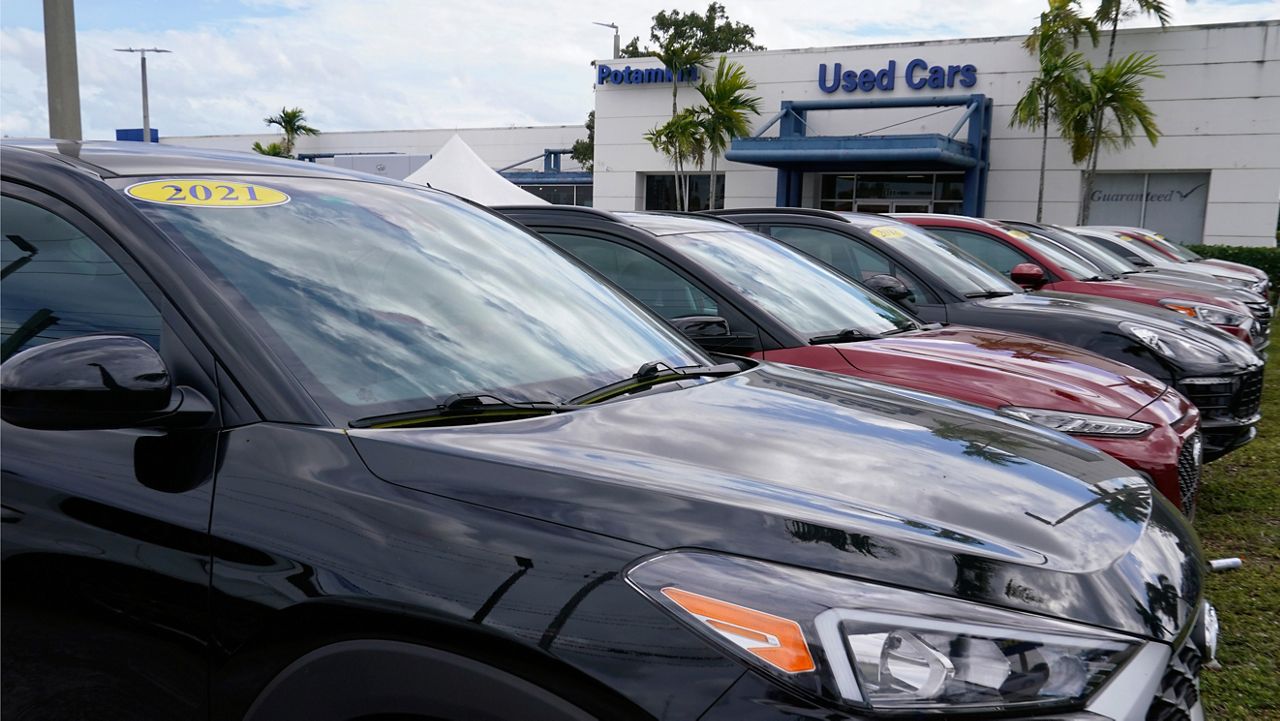LOS ANGELES — The U.S. auto market continues to behave unexpectedly. Brands that have traditionally been affordable are experiencing some of the highest price increases and lowest availability. Kia buyers, we’re talking to you.
According to Cox Automotive’s midyear review of vehicle sales trends, Kia ranks first among companies whose new vehicles have the least availability, followed by Honda, Subaru and Toyota. Mitsubishi tops the list of low-priced brands that have experienced the highest inflation, followed by Jeep, Hyundai, Honda and Kia.
“Many of the most affordable brands in the new vehicle marketplace have had the highest inflation rate, adding further pressure on affordability issues,” said Cox Automotive Senior Economist Charlie Chesbrough. “Prices are shifting to the higher tiers, leaving much lower inventory at the lower price tiers.”
Driven by a computer chip shortage that reduced availability and fueled demand, the average new vehicle transaction price reached a new peak of $47,077 at the end of last year — a 23% increase compared with 2020, according to Kelley Blue Book. The used vehicle list price also hit an all-time high of $27,569 — a 27% increase.
While prices are still high, at least the rate at which they are increasing finally appears to be slowing. The average transaction price for a new vehicle purchased in May 2022 was $47,148, according to Cox. The average list price for a used vehicle is now $28,208.
While used car prices increased by 16.9%, or $4,953, year over year in May, according to iSeeCars.com, that’s down from a 23.9% increase in April and marks the fourth straight month of used car price declines. All pre-owned cars are not created equal, however. Record-breaking gas prices have fuel-efficient makes and models seeing outsized price gains from a year ago, including the Hyundai Sonata Hybrid (up 47.8% to $26,358), Nissan Leaf (up 41.4% to $26,725) and Toyota Prius (up 36.3% to $27,421).
Vehicles have never been less affordable. A decade ago, 55% of all cars sold had a manufacturer’s suggested retail price below $30,000; just 6% were priced above $50,000. Today, it’s reversed: 16% of all cars sold have an MSRP of less than $30,000; 35% cost more than $50,000.
“The lower end buyer has been pushed out of the new vehicle market into the used vehicle market,” Chesbrough said.
But many of those buyers can no longer buy in. According to the Federal Reserve, accrued savings from COVID grew from $2.9 trillion at the end of 2021 to $3.3 trillion in the first quarter of this year, but the savings have not been even. While 80% of Americans saw their savings grow, the bottom 20% have been losing ground.
Individuals with incomes of $50,000 or less are buying fewer vehicles, both new and used. In 2016, such buyers made up 40% of new vehicle sales and 55% of used vehicle sales. In 2022, they account for 25% of new vehicle sales and 38% of used.
“The inability of consumers to keep up these years-long high loan payments is kicking people out of the marketplace,” Chesbrough said.
The current used vehicle supply is now 7% higher than it was last year at this time. Part of the reason: high used vehicle prices that are forcing some buyers onto the sidelines, reducing sales. Used car sales are down 16% so far this year compared with 2021.
“The new normal means higher prices. That’s part of the new equation,” Chesbrough said.
While price increases have been cooling for used, the average transaction price for a new vehicle is now 102% of the manufacturer’s suggested retail price.
“Limited supply coupled with unmet demand is strengthening the asking price from manufacturers,” Chesbrough said.
The computer chip shortage isn’t likely to be resolved until 2023, said Chesbrough, who doesn’t anticipate new vehicle supplies to stabilize until at least 2024.
“We think it’s going to take some time as we see only a gradual improvement in production starting next year to really make progress in inventory levels,” he said. “Supply is probably the most important factor as a predictor of when we get to normal patterns.”
New vehicle sales are down 19% so far this year compared with 2021, when the computer chip shortage first began to impact cars’ availability. Since hitting bottom last September, the supply of new vehicles has improved only slightly, according to Cox Automotive.
Demand for new vehicles is expected to exceed supply for the rest of the year, Cox Automotive forecasts, driven by COVID disruptions to the supply chain, higher interest rates and the Ukraine war wreaking havoc on everything from gas prices to raw materials.
The overall economy grew 2.6% in the second quarter this year and unemployment remains low at 3.6%, but high prices are eroding buyer confidence.
“There are more headwinds coming because we’re not through with seeing inflation clearly decline, and as a result, the Fed is going to be continuing to raise rates,” said Cox Automotive Chief Economist Jonathan Smoke. “The only question is how far and how fast and how does the consumer react to all of this? Declining consumer sentiment and how that relates to their actual purchase behaviors over the next two months is probably going to be the key.”
Smoke does not think the economy is in a recession already or headed for a recession this year. The odds, however, are growing, largely due to inflation that is now at a 41-year high and eroding Americans’ buying power.
If a recession unfolds for the auto industry, Smoke said it’s likely to be benign — more similar to the recession following the 911 World Trade Center attack in 2011 than the Great Recession of 2008.



